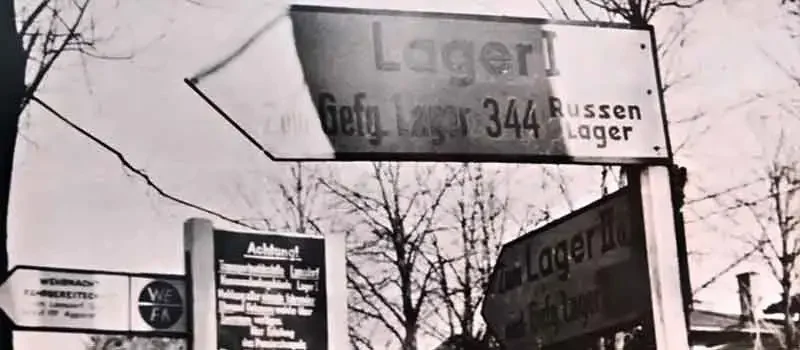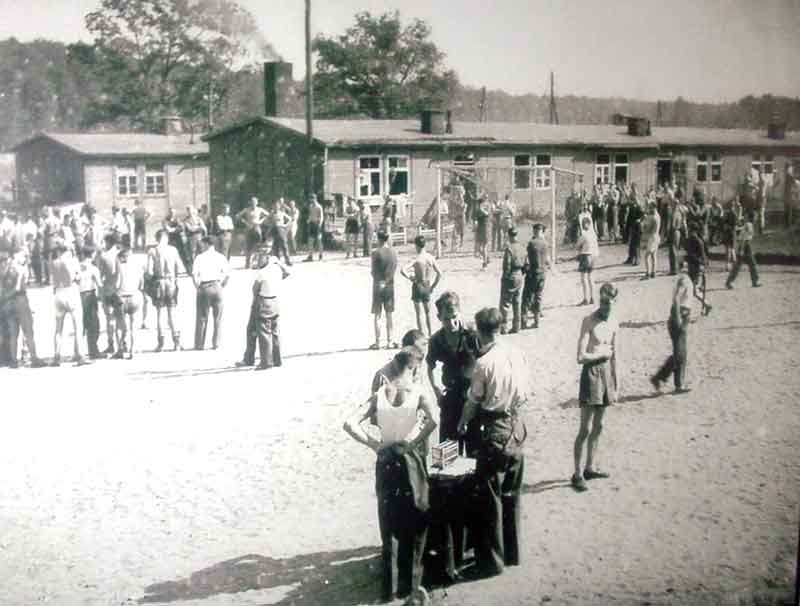- Military History
- Prisons, Prisoners & Camps
- POW Camps
- Stalag 8B (Stalag 344) - Lamsdorf (1940)

Stalag 8B (Stalag 344) - Lamsdorf (1940) Lamsdorf was one of the largest and most disliked German POW camps of World War II
Officially designated Stalag 8B, Lamsdorf was one of the largest and most disliked German POW camps of World War II. In a bleak part of Upper Silesia near the site of a POW camp built in 1915 to hold British and Russian prisoners, Lamsdorf was opened in the summer of 1940 to accommodate over 5,000 British army POWs captured during the Battle of France.
There were originally six compounds, each with four to six brick barrack huts, with each but housing between 150 and 240 men who slept first on straw and then on standard three-tier bunks. Although large numbers of prisoners were sent out to work camps (Arbeitskommandos), the total camp population rose to over 12,000 men and the number of compounds to 11 by the end of 1941, with British Empire prisoners captured in Greece and Crete and the opening of a compound for Royal Air Force aircrew.
Lamsdorf later came to hold many of the Canadian prisoners captured at Dieppe and Soviet POWs, who, as elsewhere, were treated abominably by the guards. At any given time, from 1942 through 1944, between 10,000 and 20,000 prisoners were in residence in the camp.
Living conditions and morale in Lamsdorf were bad in the first and last months of the camp's existence, as disruption of communications caused the influx of Red Cross food parcels to cease and theft consequently rose alarmingly. However, even in the years of relative stability (1941-1944), when sports and education facilities and a hospital were in place, Stalag 8B had an evil reputation. German rations, winter fuel, and building upkeep were all minimal, and this was not entirely unintentional.
The harsh conditions encouraged army prisoners - including NCOs, who were not legally required to work under the Geneva Convention to volunteer for transfer to an Arbeitskommando, where conditions would supposedly be better. Dozens of Arbeitskommandos were supplied with labor from Lamsdorf. The sheer size of the camp also posed serious administrative difficulties for the camp authorities, and organization and discipline were left to British noncommissioned officers.

Some of these NCOs worked solely for the benefit of prisoners, but others took advantage of their position to set up rackets, whereby they received more food and clothing than the men they were supposed to help. There were also "Glasgow razor gangs" (groups of thugs and petty thieves who terrorized their fellow prisoners) that neither the British nor the German authorities could control. Escape efforts were made (with the RAF contingent well to the fore) and German spies were not tolerated, as the mysterious appearance in 1944 of an unidentified body floating in one of the fire pools graphically showed.
In November 1943, after months of complaints by neutral inspectors, the Lamsdorf complex was reorganized; thousands of prisoners were moved to the camp at Teschen (which took the name Stalag 8B), while Lamsdorf was re-designated Stalag 344. Conditions improved, but the camp was evacuated in January 1945 as the Soviet army approached. Several hundred POWs lost their lives in the subsequent weeks on the road due to lack of food, exposure, exhaustion, disease, and accidental strafing by Allied aircraft before the bulk was liberated in western Germany by American forces.
- Germany Nazi (1933-1945)
- Poland (since 1918)
- WWI (1914-1918)
- WWII (1939-1945)
- {{#owner}}
- {{#url}} {{#avatarSrc}}
{{name}} {{/url}} {{^url}} {{#avatar}} {{& avatar}} {{/avatar}} {{name}} {{/url}} - {{/owner}} {{#created}}
- {{created}} {{/created}}























